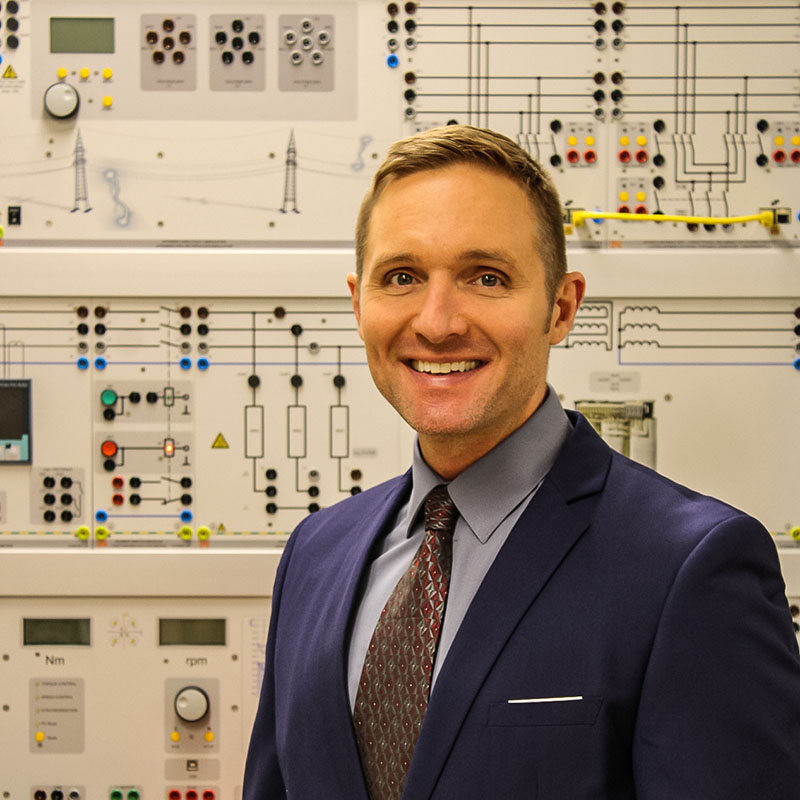Electrical Engineering Grad Shares Tips for Fundamentals of Engineering Exam Alumni Profile

Meet John Yingling '21
- Job Title & Employer
- LabVIEW Programmer, Ohm-Labs
- Major/Program
- Electrical Engineering
- Hometown
- East Freedom, Pa.; Martinsburg Central High School
- Now Living In
- Pittsburgh, Pa.
- Hobbies & Interests
- Fitness, LabVIEW, building and fixing just about anything
"Just as it is named, the majority of the FE exam contains problems based on engineering fundamentals – more specifically, mathematical electrical engineering problems that are impossible to solve without a strong foundation of the concepts. The cumulative knowledge gained during my four years at Point Park provided that foundation."
The Fundamentals of Engineering (FE) exam is the first test juniors or seniors must take to advance toward professional licensure as an engineer. John Yingling, who graduated with a degree in electrical engineering this spring, recently passed the exam. In the Q&A below, Yingling discusses what it took to prepare for the FE exam and how Point Park gave him the tools needed for success.
How did Point Park's electrical engineering program prepare you for the Fundamentals of Engineering examination?
Just as it is named, the majority of the FE exam contains problems based on engineering fundamentals – more specifically, mathematical electrical engineering problems that are impossible to solve without a strong foundation of the concepts. The cumulative knowledge gained during my four years at Point Park provided that foundation.
Engineering begins with the basics. The principles learned in DC Circuits, AC Circuits, and initial electronics courses were actively employed during the FE exam. For some of the more advanced topics, I found my Digital Electronics and Microprocessors courses to be particularly helpful, which were taught by Donald Keller, Ph.D., P.E..
Describe what the examination experience was like.
I found the exam experience to be quite pleasant and nothing to worry about. I had been studying hard for the past four years and prepared a great deal. I was ready to put all of that learning to good use. Many students are intimidated by just the thought of the FE exam, but I think they should remember that we have persevered for years through a program that most give up on or do not even attempt. We can handle a five or six-hour math test.
What study tips or test-taking advice do you have for other students preparing for the exam?
Everyone learns in different ways but here is what worked for me. First, I purchased the NCEES electrical practice exam and solved every problem, which took about eight to nine hours. Next, I subscribed to an online FE preparation course for one month prior to the exam. I performed 520 problems over the course of a month, typically solving 20 problems per session. Lastly, and I cannot stress this enough, I learned how to properly use the TI-36X Pro calculator. Just like the software and computational tools engineers use to perform their jobs, an engineering student’s tool for the FE exam is their calculator. The TI-36X Pro performs many functions that most students are not aware of. By thoroughly familiarizing myself with this calculator, I was able to convert numerous four-minute problems into 20-second problems on the FE exam.
What are the potential career benefits of having passed this exam?
As engineering students are already aware, it is not possible to become a professionally licensed engineer without first passing the FE exam. There are still many positions available that do not require licensure; however, every day the job market becomes increasingly competitive in terms of education and certifications. Passing the FE exam and becoming an officially certified Engineer in Training (EIT) could very well be the factor that “lands the job."

